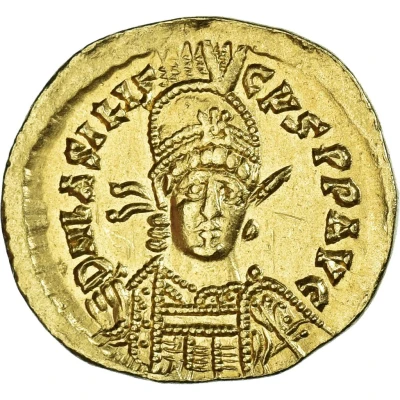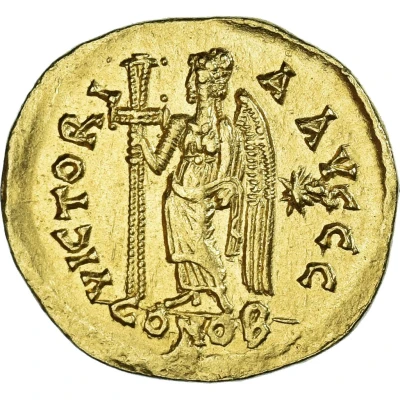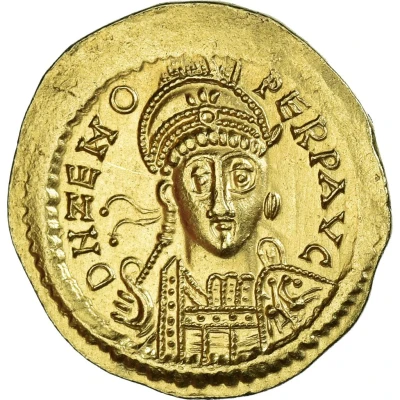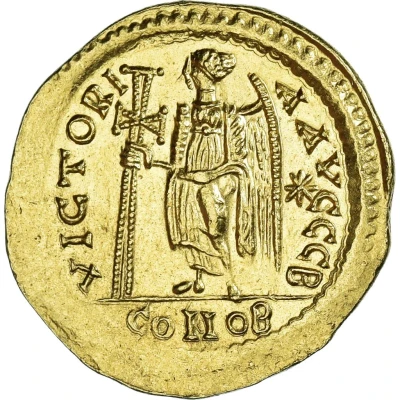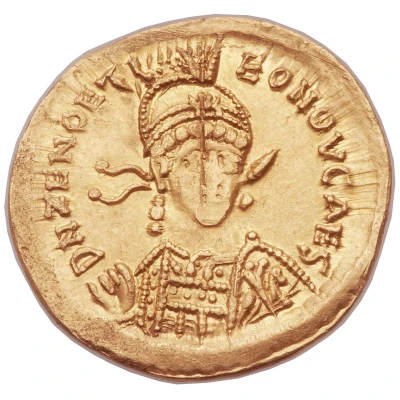
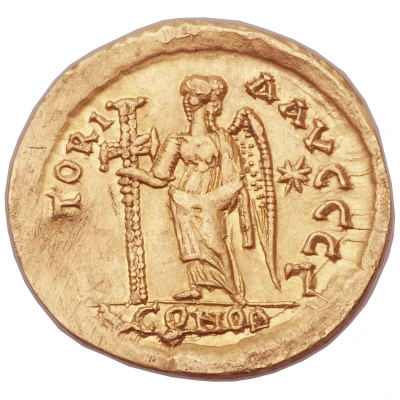

© Heritage Auctions
Solidus - Zeno VICTORIA AVGGG; Constantinopolis
| Gold | 4.39 g | 21 mm |
| Issuer | Eastern Roman Empire (Rome) |
|---|---|
| Emperor | Zeno (474-491) |
| Type | Standard circulation coin |
| Years | 476-477 |
| Value | Solidus (1) |
| Currency | Solidus (330-476) |
| Composition | Gold |
| Weight | 4.39 g |
| Diameter | 21 mm |
| Shape | Round (irregular) |
| Technique | Hammered |
| Orientation | Variable alignment ↺ |
| Demonetized | Yes |
| Updated | 2024-10-10 |
| Numista | N#373710 |
|---|---|
| Rarity index | 100% |
Reverse
Victory, winged, draped, standing right, supporting long jeweled cross; star in right field, mintmark in exergue.
Script: Latin
Lettering:
VICTORI-A AVGGG Γ
CONOB
Comment
This extremely rare solidus naming as rulers Zeno and a certain "Leo New Caesar" has puzzled historians and numismatists for centuries. Leo II, grandson of Leo I the Great, was named Augustus in infancy and was actually senior ruler during his brief co-emperorship with Zeno, from February AD 474 until his death from illness in November of the same year. This would preclude him from being the Leo mentioned in this obverse legend as NOV(ae) CAES(ar). Furthermore, die linkage evidence confirms that the issue actually belongs to the period during or after the 19-month usurpation of Basiliscus, from January AD 475 to August AD 476. J.P.C. Kent originally proposed in a 1959 article that the coin belongs to the reign of Basiliscus, and that Zeno and Leo were the two younger sons of Basiliscus, supposedly made Caesars after their brother Marcus was elevated to co-Augustus toward the end of the reign. However, Kent later abandoned this theory and suggested a more satisfactory solution to this numismatic mystery in RIC Vol. X (1994): In a somewhat garbled account, one chronicler of the period, Evagrius Scholasticus, relates that a turncoat general of Basiliscus, Armatus, helped to restore Zeno to the throne in August of AD 476. As the price for switching sides, Armatus extracted a promise from Zeno to name his son as Caesar. Evagrius records the lad's name as Basiliscus, but Kent posits that, in light of his namesake's usurpation, Zeno or his father changed it to Leo before his acclamation as Caesar, likely in September. The arrangement proved fleeting: Once firmly installed back in power, Zeno reneged on the deal and had Armatus executed, probably early in AD 477. The newly minted "Leo Caesar" was deposed and forcibly ordained as bishop of Cyzicus. Although the youth's name change is not mentioned by Evagrius, this interpretation best suits the available evidence.Interesting fact
One interesting fact about the Solidus - Zeno (VICTORIA AVGGG; Constantinopolis) (476-477) coin from the Eastern Roman Empire (Rome) is that it was issued during the reign of Emperor Zeno, who was known for his efforts to reform the Roman Empire's currency and economy. The Solidus was a new denomination introduced by Zeno, and it was intended to replace the older Gold coinage that had been debased over time. The Solidus was made of pure Gold and had a standardized weight and purity, which helped to restore confidence in the Roman currency and promote trade and commerce.
